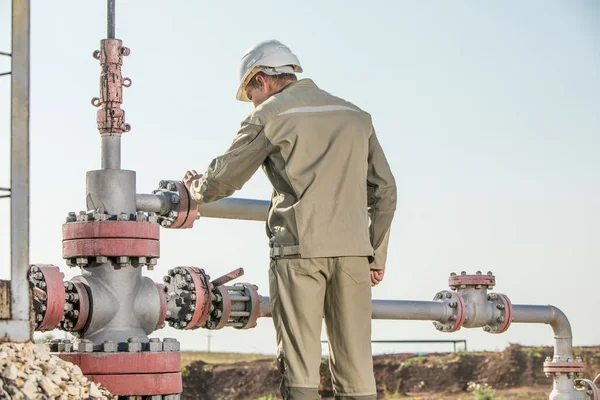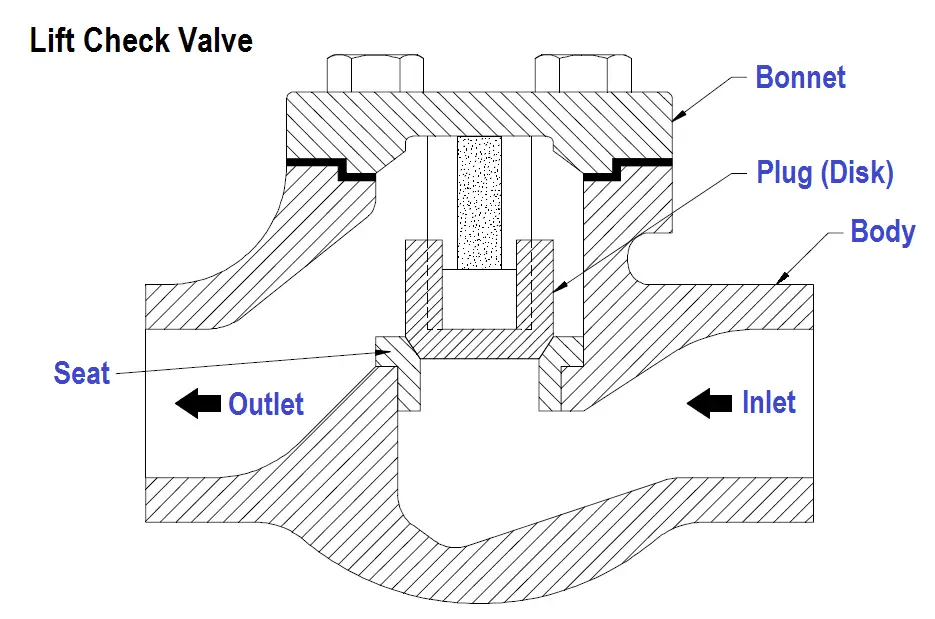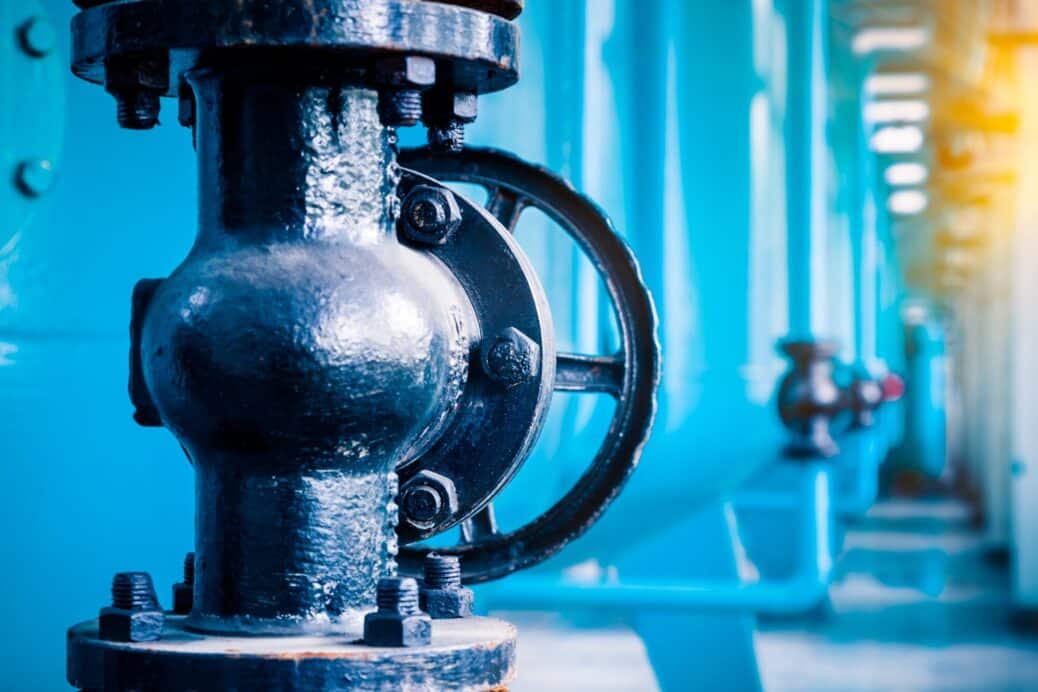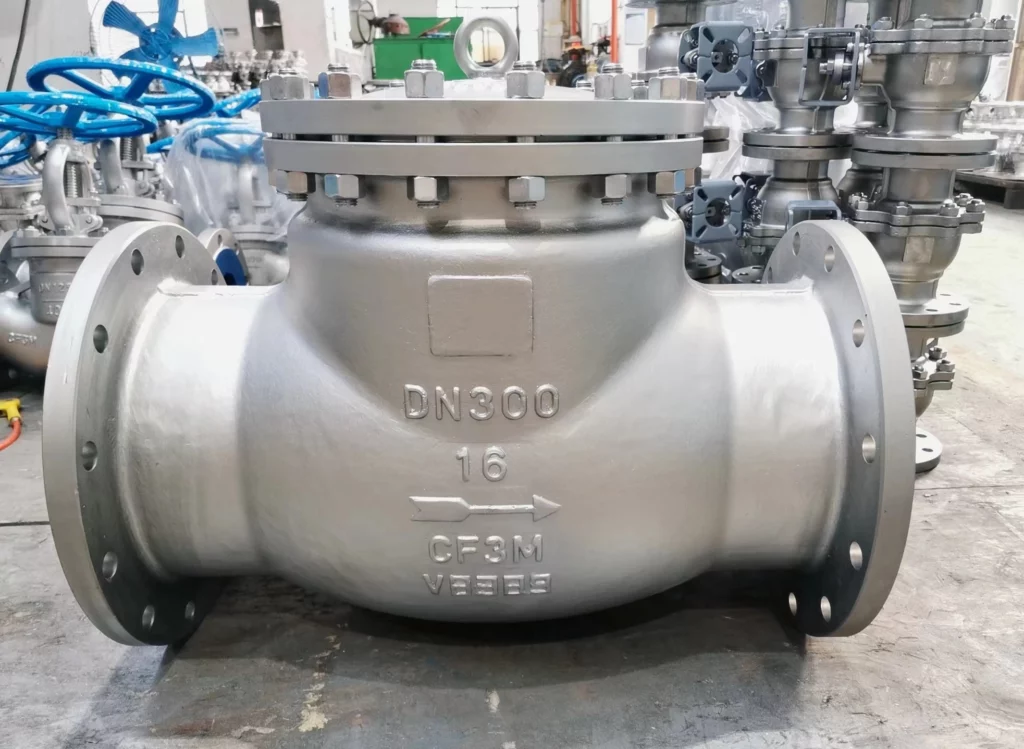Gone are the days when the arduous necessity of priming used to hinder and haunt anyone operating a pumping system! facilitating the seamless flow of fluids while preventing backflow
With each passing day, we see a newer invention introducing itself and then revolutionizing decades of repetitive efforts. In that perspective, Lift Check Valves deserve the crown of cutting-edge human diligence in the world of piping and flow systems.
When it comes to installability, these simple yet versatile engineering wonders surpass any constraints of space or orientation, with their horizontal and vertical variations covering the needs of all kinds of piping systems.
Extreme pressures and high temperatures, known as the signature work limitations of industrial fluid flow setups, have their harshness perfectly overpowered by the resilience of these devices. These valves have high-pressure capabilities and can withstand extreme temperatures without leakage risk. And what’s astonishingly amazing about these diligent inventions, is their manufacturability. The high strength applications easily find these valves in compositions of forged as well as casted materials. And if you’ve got the soft structural aspects of a plastic setup? No worries as ‘Plastic lift check valves’ are there to save the day.
Before exploring the definition, functionality, types and applications of a lift check valve or ‘lifting check valve”, let us first understand what a ‘check valve’ is.
In the world of valves and piping fittings, Check valves are used to prevent flow reversal in a pipe system. These valves get engaged when material flows through the pipeline. The reversal of flow of the traveling media shuts off these types of valves. These encompass a range of non-return valves like swing check valves or lift check valves. Ahead we are about to explore and understand the functionality and vast benefits of one of these i.e., the lift check valve.
What Are Lift Check Valves?

A lift check valve, also known by the names of ‘lift type check valve’ or “piston check valve” designed to prevent media backflow and maintain fluid consistency, is an essential component in many piping systems.
To facilitate a proper definition,
“Lift check valve or lift type check valve is a one-way, non-return system which prevents the suction line from running empty in a pumping setup.”
Talking about construction, the body of a lift check valve is comparable to that of a globe valve, with the exception that it consists of a disc and seat rather than the conventional stem and top mechanisms. The disc, also known as the piston, moves freely within the valve body. For purposes of sealing, the disc descends into its designated seat when the flow ceases or reverses.
Functionality or Working Mechanism of a Lift Check Valve:

Their operating mechanism, which is based on gravity or spring mechanics, is a harmonic combination of simplicity and effectiveness. In the instance of flow’s pressure raising the disc or piston. The piston undergoes what is called the check valve lift. This lift allows for an unrestricted smooth flow across the valve.
For the operation of the lift check valves, flow always penetrates beneath the seat. The upward pressure of the incoming flow elevates the piston or ball from the receptacle within the guides. The piston or ball is propelled onto the valve seat by the interaction of backflow and gravity when the flow ceases or reverses. The movement of a lift check valve is significantly influenced by gravity.
What are the Applications of Lift Check Valves?
They provide the consistent direction of fluids and are often employed in applications involving water, gas, and steam. Apart from being widely used to prevent the backflow of condensation in steam traps, these valves find vast usage in:
- Pipelines
- Oil and gas industry
- Food and beverage industry
- Biopharma industry
- Marine industry
- Petrochemical and HVAC systems
After defining and peeking into the exemplary mechanism of working of the lift check valves, Let us explore the different types of lift check valves:
Air Lift Check Valve:
Air lift check valves are a specific type of lift check valves that are developed for situations where it is crucial to prohibit the passage of air in the opposite direction. They are frequently used in water and wastewater treatment systems to ensure the protection of air supply lines.
Air lift check valves are designed with features that effectively prohibit the entry of air into the system when fluid flow stops. This is especially crucial in situations when air pollution could undermine the effectiveness of the entire system.
Moving forward, we explore the types of lift check valves classified as the structural variations of lift valves.Lift check valves exhibit various configurations, including both vertical and horizontal orientations.
Vertical Lift Check Valve:
Vertical lift check valves are designed to prevent the reversal of flow in a piping system1. They are activated by the flowing material in the pipeline. The pressure of the fluid passing through the system opens the valve, while any reversal of flow will close the valve. These valves are suitable for installation in horizontal or vertical lines with upward flow. They are recommended for use with steam, air, gas, water, and on vapor lines with high flow velocities
Horizontal Lift Check Valve:
Horizontal lift check valves are used primarily for air, gas, and steam services. They utilize gravity to shut off the valve, preventing reverse fluid flow. They have an S-shaped body design with a seat parallel to the fluid flow and must be installed in a horizontal position to allow fluid flow from below the valve seat.
Difference between Horizontal and Vertical Lift Check Valves:
- Orientation Considerations: The main difference between vertical lift check valves and horizontal lift check valves is their installation orientation. Vertical lift check valves are installed on vertical pipelines, while horizontal lift check valves are installed on horizontal pipelines. The vertical lift check valve is generally placed vertically during installation, while the horizontal check valve is placed horizontally.
- Operational Considerations: There is basically no difference between the vertical lift check valve and the horizontal lift check valve in terms of structure, principle, and function. However, In horizontally placed configurations, the ball is supported by a network of guide ribs. This style of check valve is commonly used in plastic check valve applications.
Conclusion:
In summary, lift check valves are essential components of fluid control systems in a variety of sectors. Whichever orientation, the design of these devices guarantees effective control of fluid movement while effectively avoiding undesired reverse flow. Having a comprehension of the differences between various configurations enables engineers to make well-informed decisions, hence optimizing system performance.
YENA Engineering stands ready to elevate your piping systems to new heights with our expertise in providing cutting-edge solutions. Our team understands the nuances of lift check valves, offering seamless integration into your setup, whether you operate in the oil and gas industry, biopharma, marine, or HVAC systems. With a focus on precision and reliability, YENA Engineering ensures that our clients benefit from the resilience and efficiency of lift check valves, overcoming challenges associated with extreme pressures and temperatures.



